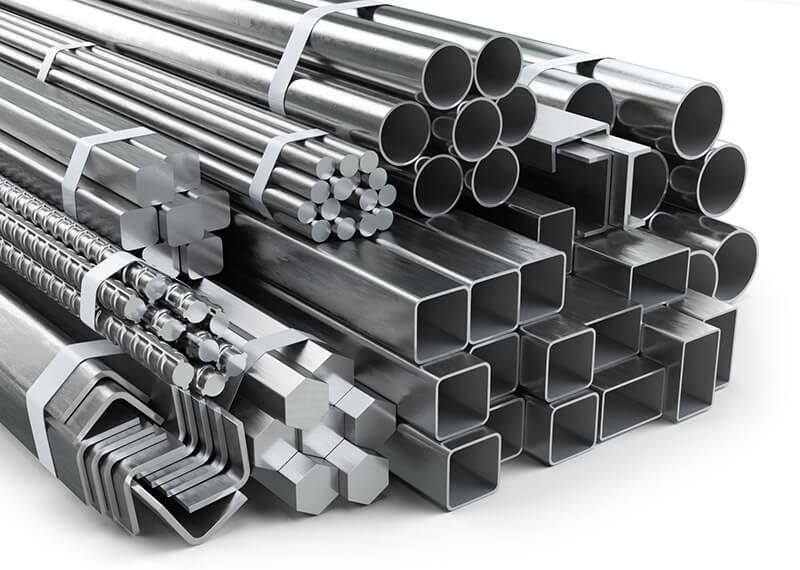Contents
What Are 316 and 316L Stainless Steels?
Both 316 and 316L are austenitic stainless steels with molybdenum content, protecting against corrosion. 316L has a lower carbon percentage, eliminating carbide precipitation during welding. This is crucial for complex fabrication and repetitive welding projects, as it reduces intergranular corrosion risk, extends component service life, and reduces repair costs. Both grades are suitable for marine atmospheres and industries handling aggressive chemicals.
Stainless steel has carved out a prominent place in manufacturing and engineering thanks to its impressive durability, but selecting the right alloy is crucial for optimal performance and longevity. Among the available choices, 316 and 316L stainless steels have become standouts for critical uses. These alloys are known for their superior resistance to harsh chemicals, saline environments, and heat, which directly impact fabricated components’ reliability and lifespan. When examining SS 316 material properties, the unique combination of elements is evident, and this design makes these steels a preferred option in environments where regular grades may falter, especially over extended periods or after continuous use.
Key Properties and Strengths
316 and 316L stainless steel are known for their exceptional mechanical and chemical properties. They maintain integrity across a wide range of temperatures without compromising structural soundness. They are particularly resistant to corrosion, pitting, crevice formation, and oxidation, making them ideal for use in ships, offshore rigs, and chemical plants. These alloys also maintain high tensile and yield strength levels even after cold working or welding, making them suitable for critical structural parts. Their austenitic structure allows for easy fabrication without risk of shattering or cracking. Additionally, their non-porous, smooth surface discourages bacterial buildup, making it ideal for sanitation-sensitive industries. These properties have been proven in numerous practical applications, ensuring industry confidence.
Common Industrial Uses
316 and 316L stainless steels are widely used in industries requiring resistance to corrosive substances, sanitized conditions, and temperature fluctuations. They are commonly used in marine equipment, pharmaceutical manufacturing, breweries, food processing plants, oil, gas, and chemical industries, and coastal city architectural components. These steels offer dependability, low upkeep requirements, and minimal operational risks, ensuring asset longevity and compliance with safety and efficiency standards. Their properties make them ideal for handling harsh environments and maintaining cleanliness in various industries.
How to Identify the Right Grade
Selecting between 316 and 316L can significantly impact project performance and cost-effectiveness. 316L’s lower carbon content makes it less susceptible to intergranular corrosion, making it beneficial for welding applications like chemical processing tanks and pipelines. Engineers consider environmental requirements, fabrication constraints, and final use cases during material selection, reviewing established standards and best practices. Choosing the right alloy also considers exposure to chlorides and acids, mechanical loads, and cleaning solutions. Practical experience shows that selecting the right grade can prevent future issues and costs.
Machining and Finishing Benefits
A premium finish on 316 and 316L stainless steel is crucial for performance, hygiene, and maintenance. Turned, ground, and polished options create smooth surfaces, reducing seals, contaminants, and friction, reducing energy consumption and wear. Machining these grades is more demanding due to their toughness, but the results are worth it. Techniques like slow feed rates, carbide tooling, and coolant ensure optimal chip removal and fewer imperfections, especially in food and beverage or semiconductor manufacturing industries.
Industry Standards and Certification
316 and 316L stainless steel products must adhere to rigorous international standards like ASTM A276 for bars and ASTM A479 for pressure-containing parts, ensuring reliability and traceability. Purchasers can expect full traceability, with each batch matched to a mill test report. This documentation is crucial for industries regulated by health, safety, or environmental requirements, reducing defects and providing a clear record for failure analysis or regulatory audits.
Future Trends in Stainless Steel Applications
The demand for 316 and 316L stainless steel is expected to rise due to technological advancements and sustainability standards in energy, healthcare, and green tech sectors. These materials are being developed to be corrosion-resistant and improve weldability, ensuring components remain serviceable throughout their design life. Their use in renewable energy, water filtration, and biotechnology will contribute to a safer, cleaner, and more reliable future.
